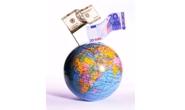Economy

Worldsteel Sustainable Steel Indicators 2017
Written by Sandy Williams
October 9, 2017
The global steel industry continues to improve its sustainability record in environmental, social and economic performance, according to the World Steel Association 2017 sustainability report.
Worldsteel surveyed 126 steel companies and six associations regarding eight sustainability indicators. The group represents 54 percent of global crude steel production for 2016 or 875 million tons of steel. Although Worldsteel does not provide a country-by-country breakdown, survey participants are widely spread across the globe, including Asia, CIS, the EU, the Middle East, Africa, and South and North America.
“Reporting our sustainability performance with the eight indicators is one aspect that demonstrates our commitment to sustainability,” said Edwin Basson, Director General, Worldsteel. “Our intention is to monitor progress and foster improvement from a social, economic and environmental sustainability perspective. In addition to reporting, we, together with our members, have been taking action through a range of initiatives to address the challenges the steel industry faces to ensure the sustainable development of the industry.”
Results for the 2016 fiscal year are as follows:
Environmental sustainability
- Greenhouse gas (GHG) emissions: An average of 1.9 metric tons of CO2 was emitted for every ton of crude steel cast.
- Energy intensity: 19.1 GJ of energy was used per metric ton of crude steel cast
- Material efficiency: 97.6 percent of materials used to make crude steel were converted to products and byproducts.
- Environmental Management Systems (EMS): 97.1 percent of employees and contractors worked in EMS-registered production facilities.
Social sustainability
- Lost time injury frequency rate (LTIFR) was 1.0 injuries per million hours worked.
- Employees (at both production and non-production facilities) received an average of 7.0 training days per year.
Economic sustainability
- Investment in new processes and products was 13.0 percent of revenue.
- Economic value distributed (EVD) was 98.8 percent of industry revenue.
The comparison chart below from Worldsteel shows the progress made in the past three years.
Improvement was seen in seven of the eight categories. Greenhouse gas emissions was the only indicator to remain the same. Worldsteel explained that the reduction of CO2 emissions is one of the great challenges facing the steel industry.
“These emissions are mostly due to the chemistry of steelmaking and cannot be significantly improved with current technology,” said a spokesperson for Worldsteel. “The industry is working together on a number of initiatives to develop breakthrough steelmaking technologies that can reduce CO2 emissions by at least 50 percent, potentially revolutionizing the way steel is made.”

Sandy Williams
Read more from Sandy WilliamsLatest in Economy

Construction adds 13,000 jobs in March
The construction sector added 13,000 jobs, seasonally adjusted, in March, but tariffs could undermine the industry.

Supply chains, end-users brace for impact from tariffs
Supply chains are working through what the tariffs mean for them

ISM: Manufacturing expansion loses steam after two months of growth
US manufacturing activity slowed in March after two straight months of expansion, according to supply executives contributing to the Institute for Supply Management (ISM)’s latest report.

Chicago Business Barometer rose to 16-month high in March
The Chicago Business Barometer increased for the third-consecutive month in March. Despite this, it still reflects contracting business conditions, as it has since December 2023.

Durable goods orders rise again in February
Transportation equipment led the increase, rising 1.5% to $98.3 billion.

